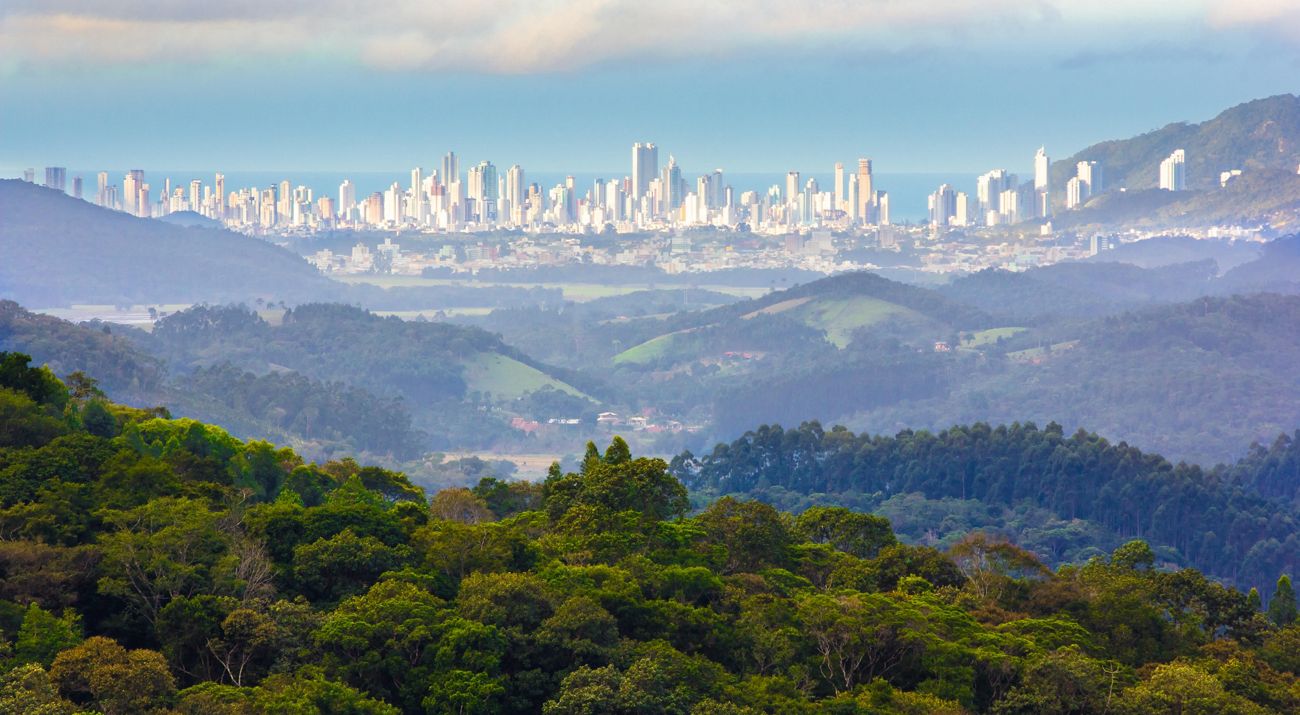
Fresh Air For All: A Remedy Within Reach
Air pollution is a major public health challenge with clear solutions in conservation.
By Joshua Goldstein, Bridge Collaborative Director & Heather Tallis, Global Managing Director, Science Strategy
"In these unprecedented times..." We know, the phrase has become a cliché. But it's also true—these are unprecedented times, and we're all still working to fully understand what COVID-19 means for the world. As part of our effort to help make sense of these issues, we're publishing a new series of weekly perspectives from some of TNC's top scientists to share their expertise and talk about the relationship between nature and public health—and what nature can do for our communities in these, well, unprecedented times.
Previously in this series:
"Greener Cities, Healthier Cities," by Rob McDonald, TNC Scientist
"Conservation for the Last Mile," by Priya Shyamsundar, TNC Lead Economist
Take a deep breath… how many times have you heard that phrase recently? From mindfulness apps and virtual yoga classes to furtive strolls around the neighborhood, stress-management has never been more encouraged. And so much of it comes back to that same, primal act of filling our lungs with air.
And yet depending whereabouts you live, inhaling a lungful may have surprisingly harmful effects on your well-being. Air pollution has long been a major health concern, and the problem threatens to get worse as congested cities proliferate across the planet and consumer lifestyles remain intertwined with an economy that runs on fossil fuels.
So when we as conservationists consider what we can do to help mitigate against the impact of future respiratory disease outbreaks, it’s crucial that the conversation doesn’t focus solely on the illegal wildlife trade or tropical deforestation as potential disease vectors. By addressing the drivers of air pollution, we are addressing not only a major public health issue but also some of the biggest challenges facing nature in general.
Quote
What sets a problem like air pollution apart is brutally simple: with air quality the majority of deaths are avoidable.
Even before COVID-19 broke cover in Wuhan, air pollution was an established killer—responsible for almost five million premature deaths per year globally and likely an indirect contributor to many more. Comparing this stat with, for example, the average annual death tolls for malaria (around 618,700 in 2017) or poor sanitation (around 432,000) puts the scale of the air pollution problem into even sharper relief. Quite simply, it is the single largest environmental risk factor over which we have direct control, with the largest sources of air pollution health impacts coming from energy use (fossil fuels), as well as agricultural practices and biomass burning (including forest fires).
In addition to being a killer in its own right, air pollution is also the perfect accomplice to other respiratory diseases like coronaviruses, pneumonia or the common flu. And while it’s important to recognize that scientists are only beginning to explore potential causal links between long-term exposure to unhealthy air and COVID-19 mortality, we do know that high levels of air pollution increase respiratory system distress, which can in turn lead to increased susceptibility to coronavirus infection and fatal outcomes. Evidence is also growing in China and other countries of the link between air pollution, premature deaths and reduced cognitive performance across all age groups, as well as findings from the United States highlighting the disproportionate health burden that air quality issues are placing on Black and Hispanic populations in particular.
Simply put, air pollution is hands-down one of the most serious global health issues we face. But the fact that many of the key drivers of this problem are also major drivers of biodiversity decline presents an opportunity for conservationists and environmental policymakers to address two major planetary challenges together. The same conservation interventions that act to stabilize the Earth’s climate, transform food systems, stop wildfires and transition households from solid fuels to clean energy sources would be transformational for nature—and prevent up to 4.9 million human deaths from pollution-related causes every year.
Our global insights, straight to your inbox
Get our latest research, insights and solutions to today’s sustainability challenges.
Sign UpReducing emissions from fossil fuels like coal, oil and gas is by far the most effective step we can take both to reduce air pollution and advance environmental conservation. The fossil emission cuts required to meet the Paris Climate Agreement, for example, could also reduce air pollution-related deaths by an estimated 153 million people each year.
A distant but important next best step would be reducing household dependence on wood fuel for heating and cooking, a practice that adds to air pollution while also driving the loss of irreplaceable forests and the many benefits they provide for carbon storage and wildlife habitat.
Some of the proposed economic stimulus packages to power national economies out of the COVID-19 slump have also suggested a weakening of existing air quality regulation. The science shows us that doing so would actually be a clear act of socioeconomic self-harm, leading to preventable and deadly air pollution.
What sets a problem like air pollution apart from the threat of COVID-19 is brutally simple: while we’ve shown ourselves to have little control over the spread of a highly contagious new coronavirus, with air quality the majority of deaths are avoidable. We know what causes them, we know how to stop it, and we know that doing so would also have a transformative impact on the natural ecosystems that underpin so many facets of our daily lives.
As we find ourselves navigating through the current global crisis, it's all the more critical that conservationists help to join the dots between public health and the natural world. The health of all living things depends on it.
Global Insights
Check out our latest thinking and real-world solutions to some of the most complex challenges facing people and the planet today.


